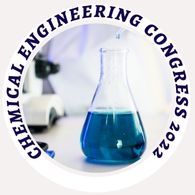Heterogeneous Catalysis and Homogeneous Catalysis
Heterogeneous catalysis is a sort of catalysis where the impetus includes an alternate stage from the reactants and items. This may relegate to the actual stage - strong, fluid, or gas - yet additionally to immiscible liquids.
Most heterogeneous impetuses are solids that work inside vaporous or fluid reactants. It has dynamic puts on its surface onto which the reactants are adsorbed and afterward partner with the impetus. This collaboration builds up the reactivity of the particles.
Corrosive catalysis, organometallic catalysis, and enzymatic catalysis are tests of homogeneous catalysis. In such cases, acids and bases are every now and again effective impetuses, as they can accelerate responses by changing security polarization.
Heterogeneous catalysis regularly incorporates strong stage impetuses and gas-stage reactants. For this situation, there is a pattern of sub-atomic adsorption, response, and desorption occurring at the impetus surface. Thermodynamics, mass exchange, and warmth move sway the pace of response.
Heterogeneous catalysis has at any rate four stages:
- Adsorption of the reactant onto the outside of the impetus.
- Actuation of the adsorbed reactant
- Response of the adsorbed reactant.
- Dissemination of the item from the surface into the gas or fluid stage.
In science, homogeneous catalysis will be catalysis in a goal by a dissolvable impetus. Homogeneous catalysis prompts responses where the impetus is in the indistinguishable stage as the reactants, generally in arrangement. Interestingly, heterogeneous catalysis characterizes measures where the impetuses and substrate are in various stages, ordinarily strong gas, around. The term is utilized only to characterize arrangements and infers catalysis by organometallic compounds. Homogeneous catalysis is a set up innovation that stays to result. An informative significant application is the creation of acidic corrosive. Compounds are instances of homogeneous impetuses.
Instances of Homogeneous Catalysts:
Corrosive catalysis, organometallic catalysis, and enzymatic catalysis are examples of homogeneous catalysis. Frequently, homogeneous catalysis includes the presentation of a fluid stage impetus into a watery arrangement of reactants.
- Corrosive catalysis
- organometallic catalysis
- enzymatic catalysis
Related Conference of Heterogeneous Catalysis and Homogeneous Catalysis
Heterogeneous Catalysis and Homogeneous Catalysis Conference Speakers
Recommended Sessions
- Biochemical Engineering
- Biomaterials and Biopolymers
- Catalysis and Reaction Engineering
- Catalysis and Zeolites
- Catalysis for Biorefineries
- Catalysis for Chemical Synthesis
- Catalysis for Energy
- Catalysis in Nanotechnology
- Catalytic Materials & Mechanisms
- Catalytic Pyrolysis
- Chemical Engineering in Nanotechnology
- Chemical Kinetics
- Drug discovery and synthesis
- Electrocatalysis
- Environmental Catalysis
- Enzymes, Biocatalysis and Biotransformation
- Fluid dynamics & its Phenomena
- Green and Sustainable Chemistry
- Heterogeneous Catalysis and Homogeneous Catalysis
- Industrial Chemistry
- Molecular Catalysis
- Organocatalysis
- Organometallics and Synthesis
- Petrochemical Engineering
- Photocatalysis
- Plasma Catalysis
- Polymer Chemistry
- Surface Chemistry
Related Journals
Are you interested in
- 3D Printing in Microfluidics - Microfluidics 2026 (Germany)
- AI & Automation in Microfluidic Systems - Microfluidics 2026 (Germany)
- Biomedical Microfluidic Applications - Microfluidics 2026 (Germany)
- Clinical Translation & Commercialization - Microfluidics 2026 (Germany)
- Droplet-Based Microfluidics - Microfluidics 2026 (Germany)
- Lab-on-a-Chip Innovations - Microfluidics 2026 (Germany)
- Microfabrication & Soft Lithography - Microfluidics 2026 (Germany)
- Microfluidic Biosensors & Diagnostics - Microfluidics 2026 (Germany)
- Microfluidic Cell Culture Platforms - Microfluidics 2026 (Germany)
- Microfluidics for Drug Delivery - Microfluidics 2026 (Germany)
- Microreactors & Chemical Processing - Microfluidics 2026 (Germany)
- Nanofluidics & Molecular Transport - Microfluidics 2026 (Germany)
- Organ-on-Chip Engineering - Microfluidics 2026 (Germany)
- Point-of-Care Microdevices - Microfluidics 2026 (Germany)
- Single-Cell Microfluidic Analysis - Microfluidics 2026 (Germany)

